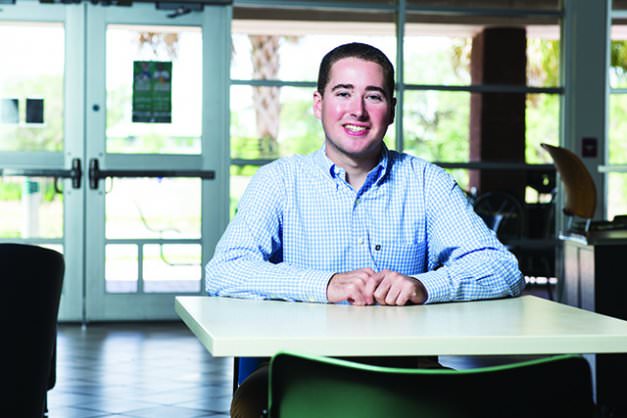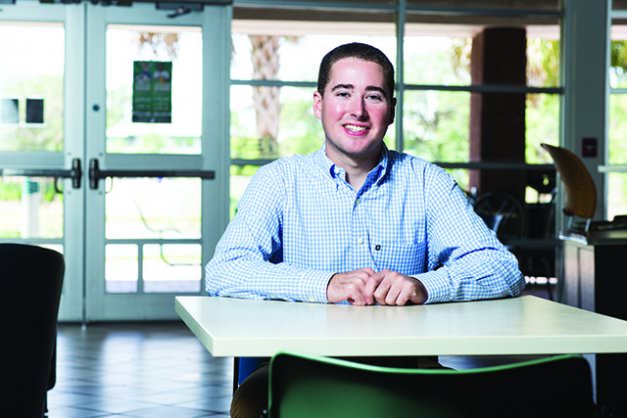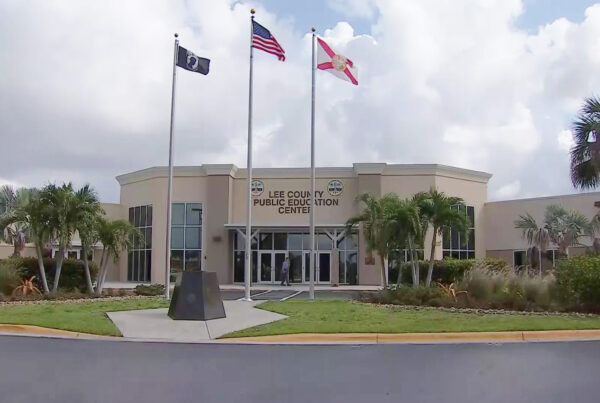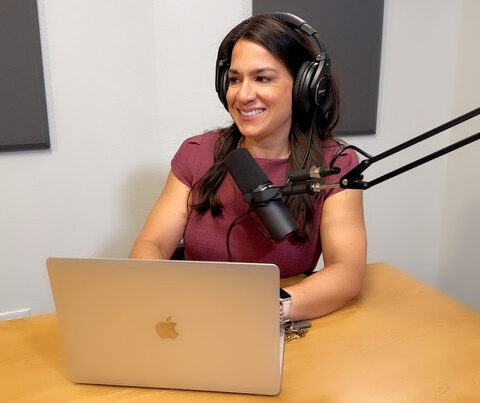
How local leaders are trying to close the higher education gap and diversify the workforce.
For most Southwest Florida adults, education stopped at high school.
Just 27 percent of working-aged people in the five-county area hold a post-secondary degree, plus an untold number of others who hold technical certifications.
In some ways, the education level doesn’t seem problematic. As of about a month ago, 46 percent of job openings on the state’s employment database asked for no more than a high school diploma or equivalency. That’s not unusual.
But those aren’t the jobs that lead to individual or regional economic gain, and they certainly aren’t the jobs that will move Southwest Florida beyond its traditional tourism, hospitality and construction base. If the recession taught the region one lesson, it’s that economic diversification is paramount.
Now some community leaders and educators are wondering if the education gap is holding Southwest Florida back—and they’re taking big steps to make college more alluring and attainable.
“One of the first things businesses ask when they are expanding or relocating is, ‘Can I find people?’” says Dennie Hamilton, CEO of Lee County Electric Cooperative and a member of the recently formed Southwest Florida Economic Development Alliance.
The answer: Not always. “It has been a bit of a challenge to attract individuals,” acknowledges John Patrick Boland, the vice president of strategy for Hertz Equipment Rental Corp., a subsidiary of the rental car business. His firm, which is in the process of separating from the parent company, will primarily seek people with “knowledge” skills such as information technology.
Hamilton and Boland are among the 80 business leaders, educators, politicians and civic leaders supporting the newly formed “FutureMakers Coalition,” dedicated to increasing the region’s higher education completion rate to 40 percent by 2025.
 “Everything people have talked about what they want the region to be, the key is attainment,” says Sarah Owen, president and CEO of the Southwest Florida Community Foundation, who initiated the post-secondary push and the formation of FutureMakers (pictured left).
“Everything people have talked about what they want the region to be, the key is attainment,” says Sarah Owen, president and CEO of the Southwest Florida Community Foundation, who initiated the post-secondary push and the formation of FutureMakers (pictured left).
The coalition’s formation was a big deal. The Lumina Foundation, an Indianapolis-based nonprofit dedicated to increasing college and technical school grads nationwide, has adopted Southwest Florida as one of its partnering communities, throwing resources, expertise and clout behind the effort. The U.S. undersecretary of education attended a kickoff meeting, affirming the coalition’s significance.
To meet the new coalition’s goal, Southwest Florida will need 40,000 more degree holders in the next 10 years at current population levels. To make that happen, Southwest Florida will need more students like Todd Hammer entering desperately needed—and often-forgotten—skilled trades, or those like Florida Gulf Coast University’s Madeline Heath and Elliott White finding ways of keeping their peers from dropping out, or civic leaders like Fort Myers Mayor Randy Henderson making it easier for adults to return to school.
A NATIONAL PROBLEM
The degree challenge isn’t unique to Southwest Florida. Globally, the United States ranks 11th in post-secondary attainment with 40 percent of adults holding an associate’s degree or higher. In South Korea, the rate is 64 percent; in Canada and Japan, it’s 60 percent, according to the Organisation for Economic Co-operation and Development.
In Florida, 38.6 percent of adults have a degree.
The obvious response—coaxing more students into college—is not the real solution.
The region’s (and nation’s, for that matter) problem isn’t enrollment. It’s completion.
Nearly 70 percent of high school graduates make their way to college within two years; only about four in 10 will finish, according to the 2011 Pathways to Prosperity report by Harvard University. At Florida Gulf Coast University, 49 percent of students complete their degrees in six years, and 72 percent return to school after their first year with a grade point average of 2.0 or above.
Florida SouthWestern State College has a 24 percent three-year graduation rate.
The individual impact of dropping out is obvious; what’s less recognized is the overall blow to the nation’s economy. Four-year college dropouts cost taxpayers $9 billion in federal and state grants, and two-year college dropouts waste $4 billion in government aid, according to the Indiana-based nonprofit Complete College America.
People leave school for lots of reasons.
Financial: Money to start college is relatively easy to acquire; harder to secure is money to finish college after freshman-year scholarships run out. In addition, many students don’t realize they have to request financial aid every year, or they decline to seek federal help because the application is so complicated (the government is looking to simplify the process).
Family obligations: Work and parenting can make degree completion impossible for nontraditional students.
Failure to connect: Students who don’t bond with peers and professors are more likely to feel alone and overwhelmed, especially in the first year.
Lack of preparedness: Despite efforts at the K-12 level, 51 percent of two-year college students nationwide need remedial help to master college-level work.
Lack of interest: College isn’t right for every high school grad, but it’s the option most heavily promoted at the expense of technical schools, which offer career-specific training for well-paying jobs.
Pick any one of those factors, and you’ll find lots of ways Southwest Florida educators, nonprofits and business leaders are trying to address the challenges surrounding higher education completion.
What FutureMakers is trying to do is bring all of these efforts—and new ones—into alignment so that isolated initiatives become regional ones.
“We’re missing the interconnectedness,” says James Wohlpart, dean of undergraduate studies at Florida Gulf Coast University. [FutureMakers] will create that force.”
ACADEMIC SUPPORT
Elliott White, a sophomore at Florida Gulf Coast University, found his post-secondary career in jeopardy before it even started. His math scores were too low to earn immediate acceptance; he was offered a spot only if he completed a summer program and improved his numeric skills.
He did—and then he soared.
White earned a 4.0 grade point average his freshman year, was accepted into the Honors Program and is majoring in biology, the first step, he hopes, toward medical school.
Now, White is a peer academic leader in “Effective Learning,” a course newly required for those on academic probation. He’s hoping the study skills and strategies he and a faculty member deliver will help students turn their grades around—and keep them in school.
The university has stepped up such retention efforts in the past three years, says Wohlpart, undergraduate dean.
Efforts include: increasing internship and service-learning opportunities; linking students with mentors; finding new sources of financial aid for the later years of college; and working more closely with “super seniors,” those students who can’t quite seem to finish their degrees.
Wohlpart has encouraged students to pursue their own ideas, too, hoping to see them form stronger connections with each other, their professors and their community. One of them is Madeline Heath, a senior and the One Book, One Campus outreach coordinator. She has helped the university transform a required freshman reading project into a campus-wide analysis of a book, its issues and the ways its themes relate to students.
“I help create different events around the theme of the book,” says Heath. “It gets them academically engaged outside of the classrooms.” But more importantly, she suggests, it gives students a reason for being on campus aside from classes.
“One of the most brilliant people I ever worked with, she almost dropped out her freshman year,” Heath says.
“She was depressed and thought college wasn’t for her.” The student discovered a service-learning program that assists the Dominican Republic. The would-be college dropout graduated with a degree in anthropology and is now in Peru. Heath herself won a full scholarship to University of South Florida for graduate school. Her One Book experience inspired her to pursue work in university student services.
The retention efforts are paying off. This past year, 79 percent of freshmen returned for their sophomore year. The national average is around 73 percent, Wohlpart says. The percentage of students graduating within six years has increased from 44 percent to 49 percent, and thanks to local business support, FGCU has the highest rate of job placement for graduates in the state.
Florida SouthWestern State College has launched similar initiatives. Retention can be harder on that campus, populated largely by nontraditional and commuter students who don’t experience the bonding that dorm life fosters or have time to linger after class.
The college two years ago started the “Cornerstone Experience,” a course designed to ease the transition into college life, says Christine Davis, the vice president for student affairs and enrollment management. The curriculum includes goal-setting, selecting majors, mapping career plans.
“We felt they really needed this course at the start of their college careers,” Davis says. Other efforts include an Early Alert system that flags students with waning grades and links them with faculty members for support, a peer mentoring initiative and “Service Saturday” volunteer efforts, bringing students together outside of class.
“We’re building a community among students so they feel connected,” Davis explains.
College success also means making sure high school students are ready for college in the first place. Collier, for example, administers the Postsecondary Education Readiness Test, or PERT, to gauge the 11thgraders’ readiness for college-level reading, writing and math. Those who do poorly are offered additional instruction during their senior year.
“We spend a whole year trying to get the kids prepared,” says Dale Johnson, the Collier County School District’s supervisor of career and technical education.

Fort Myers Institute of Technology director William McCormick
MAKING TECHNICAL SCHOOL RELEVANT
When Todd Hammer graduated from high school, there was no question he was going to college. He attended Ohio Dominican University in Columbus, Ohio, and majored in criminal justice. “Trade school was not something pushed by my parents or teachers,” says Hammer, now a Fort Myers resident.
But Hammer later decided he wanted a career change and a hands-on profession. He enrolled in Fort Myers Institute of Technology to study air-conditioning, heating and refrigeration technology, and within 18 months, he had completed his training and landed a job.
“[My attitude] evolved. Working with your hands is a forgotten art and it’s making a comeback,” Hammer says.
Or so hopes William McCormick, the school’s director.
“We constantly fight this challenge that people just forget about us as part of the educational spectrum,” he says. A technical certificate is the equivalent of an associate’s degree.
The nation faces a shortage of skilled workers as generations of hands-on workers head into retirement. A Georgetown University study projects 47 million job vacancies by 2018 in fields such as health technology, construction, manufacturing and natural resources.
“Not enough high school graduates are going into these fields. People don’t think about them. They don’t think about technical professions being worthy of pursuit,” McCormick says.
Fort Myers Institute of Technology last year had the highest first-year wage ($38,064) and highest percent of employed graduates among the state’s 47 public technical schools. Those graduating with associate degrees from the state college system earn a median wage of $28,884; four-year state university graduates have a median salary of $36,884. Additionally, McCormick says, many technical school graduates go on to establish small businesses, the backbone of Southwest Florida’s economy.
“Most of the jobs in this region do not require a college degree, but they do require a technical certificate,” McCormick says.
EARLY EXPOSURE
The region’s K-12 schools want students to start thinking about careers and college years before graduation day arrives.
Across Lee and Collier counties, public high schools have implemented programs such as academically rich AVID and Cambridge AICE, in addition to an array of Advanced Placement courses and dual-enrollment offerings that allow students to earn college credit or work toward technical certifications while in high school.
“We want to provide as many different pathways and options as possible,” says Dale Johnson of Collier Schools.
Both districts are growing their career academies, special schools-within-schools that train students for industries ranging from construction to public service to health care, in addition to a standard academic foundation.
These students may take industry certification exams—the same tests adults take—qualifying them to go to work straight out of high school or to go on to more advanced post-secondary training.
In some cases, career academies target specific workforce gaps, such as a new welding program at East Lee County High School.
“As far as I know, it is the only full-time welding program at a regular high school,” Principal Brian Mangan says. In its first-ever round of certification tests, 204 students passed. “That was huge for us. It was inspiring, and we’re now setting up our second round of testing,” Mangan says.
Other students at his school are graduating as certified automotive technicians, nursing assistants and EKG technicians.
Outside organizations help. Florida Gulf Coast University both brings younger students on to campus and sends its students out to K-12 schools to lead special programs. Ave Maria University dispatches its students to Immokalee to work with children. Area businesses are working with Collier County Schools to offer teens summer internships. Junior Achievement of Southwest Florida sends business people into classrooms to deliver programs ranging from work-readiness to financial literacy to entrepreneurship.
“You have to plant these seeds now,” says Anne Frazier, the Junior Achievement CEO. “They are starting to make decisions that will affect them for the rest of their lives.”
Frazier thinks volunteers provide the link that is missing for many young people, answering the perennial “Why are we learning this?” question.
“We are helping them to see that ‘wow, there is a life outside of school,’” she says.
GETTING ADULTS BACK INTO CLASS
Nationally, some 36 million working adults have had some college, but no diploma to show for it, according to Lumina. That’s true for about 2 million Floridians, 21 percent of the state’s population.
 Fort Myers Mayor Randy Henderson (pictured left) wants to create a downtown college center, a place where multiple institutions can offer courses or learning labs. Every day, some 10,000 people come into the city to work. Why not bring college to them rather than making them travel to college, he reasons.
Fort Myers Mayor Randy Henderson (pictured left) wants to create a downtown college center, a place where multiple institutions can offer courses or learning labs. Every day, some 10,000 people come into the city to work. Why not bring college to them rather than making them travel to college, he reasons.
“Every venue where I just happen to casually mention this, it turns heads,” he says. Henderson thinks it can be a reality in the near future.
Hodges University is working on other ways to aid adult learners, says interim President David Borofsky, whose campuses are comprised of mostly nontraditional students.
The university is addressing everything from childcare to transportation to financial aid, the challenges that derail its students, Borofsky says. He’s also pushing to enroll graduates of the school’s sizeable English as a Second Language program into degree programs. And Hodges has come up with creative ways to help adult professionals earn degrees that will propel them ahead in their industries. The UPower program is an online program that allows people to show mastery in the fields in which they already work and earn the credentials they need for advancement.
“The more students we can graduate or help have careers or get promoted, the more we add to the economy,” he says.
COMBINING FORCES
Elsewhere, communities that have made a regional commitment to post-secondary education are starting to see results, according to Haley Glover, strategy director for the Lumina Foundation. Louisville, Kentucky’s 55,000 Degrees initiative, for example, has resulted in a 20 percent increase in college graduates since 2010. The region has seen a 67 percent jump in the number of adult learners enrolling in school, and more than 60 employers have joined a Degrees at Work program.
Locally, the FutureMakers Coalition wants to address everything from changing the perception of technical education to encouraging high school grads to go to college or trade school to developing mentoring programs.
Efforts must include exposing students to high-end jobs available in this market, adds Mike Boose, the human relations director for Arthrex, a Naples-based medical device company that employs 1,500. Too often, he says, locally grown students think they have to go elsewhere for good opportunities.
“We want every student in the region to understand what employment opportunities are available,” says Boose, whose company has been setting up everything from in-house internships to training programs at local technical schools. “We invest in 12 years of educating a student and then we give them away.”
Industry leaders are eager to see what the postsecondary push can yield.
“Let’s just get this done and start trying to move the needle and figure out what works,” Hamilton says. “I think it’s exciting, and it’s a fairly diverse, broad set of folks being brought under the umbrella to make this happen.”
Boland, of Hertz Equipment, looks at places like Silicon Valley, once farmland that evolved into a hightech, start-up, entrepreneurial mecca. “Cities re-invent themselves and go through creative destruction every day. This area has a great chance to reinvent itself,” Boland says. GB




























